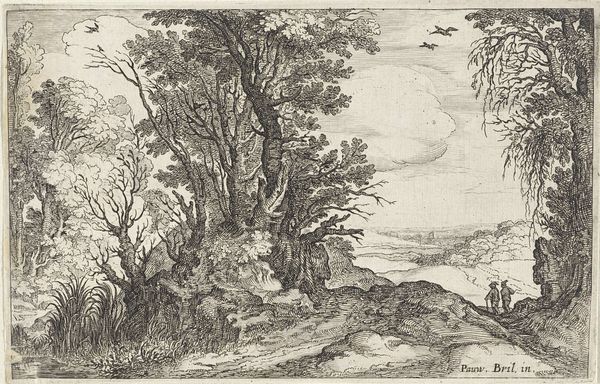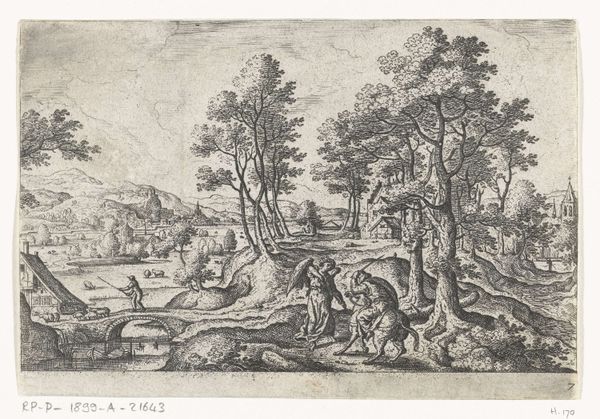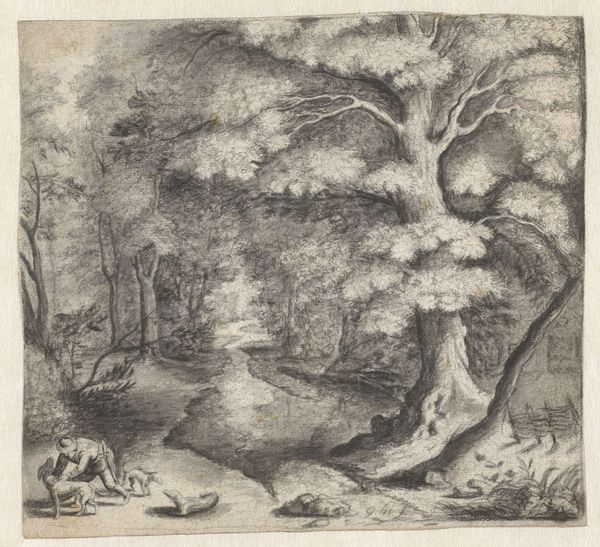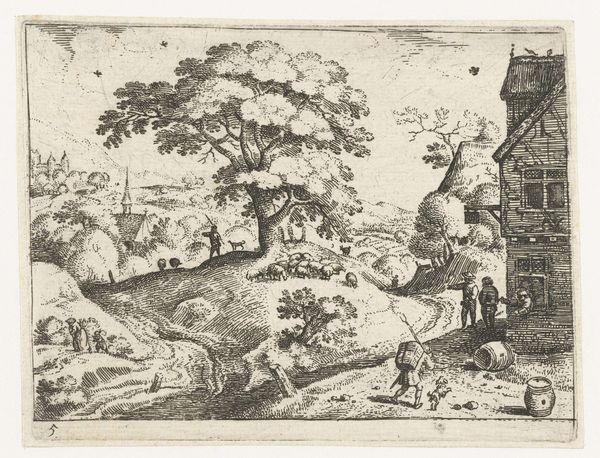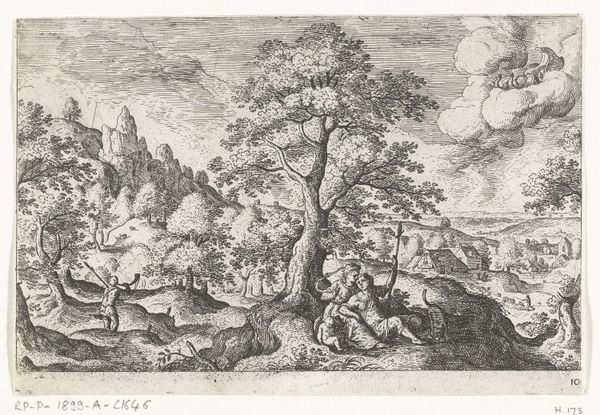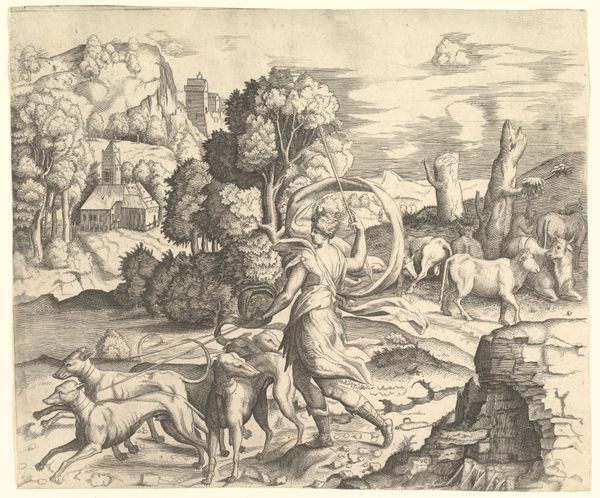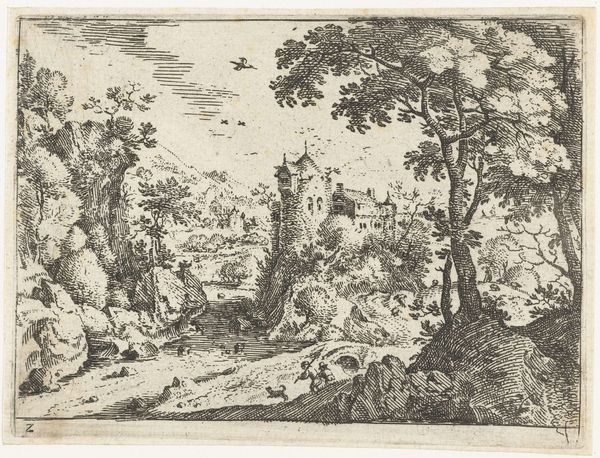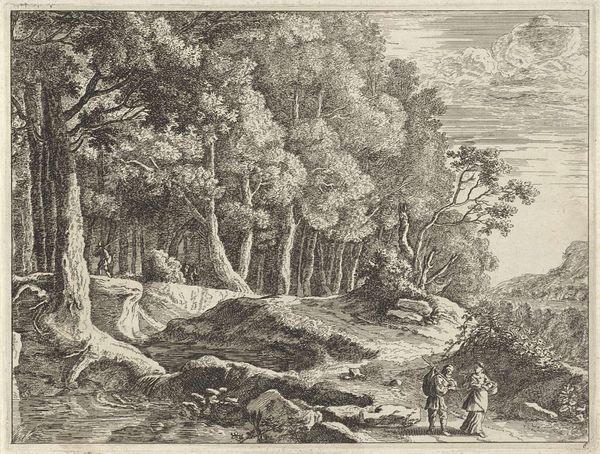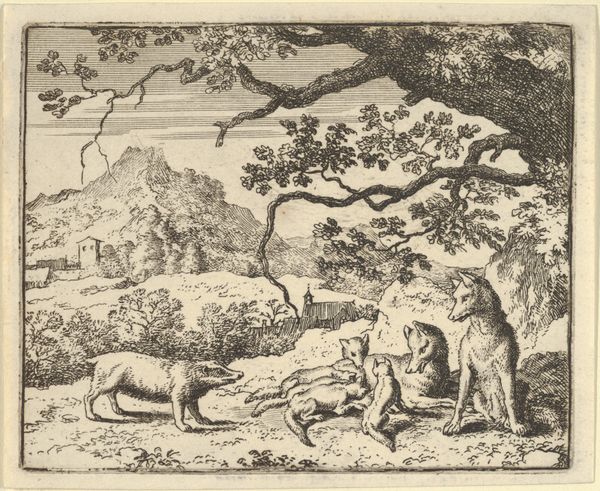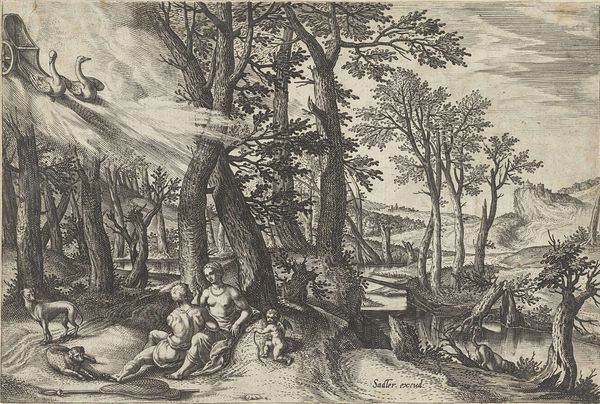
drawing, print, etching, ink, engraving
#
drawing
#
baroque
#
pen drawing
# print
#
etching
#
landscape
#
ink line art
#
ink
#
forest
#
line
#
genre-painting
#
engraving
Dimensions: height 219 mm, width 329 mm
Copyright: Rijks Museum: Open Domain
Curator: My first thought: stark beauty in simplicity, isn't it? The strong diagonal of that tree, the texture… Editor: Indeed. We’re looking at "Landschap met beekje," or "Landscape with Creek," a work attributed to Gerrit Gauw, dating roughly between 1604 and 1638. It’s a Baroque landscape, rendered in ink through etching or engraving. Curator: The precision of line is what grabs me. Notice how Gauw uses line weight and density to create a sense of depth, especially in the rendering of the foliage and that small group of figures in the background. It’s almost mathematical. Editor: Considering the socio-political environment of the Dutch Golden Age, landscapes became increasingly popular as symbols of national pride and burgeoning mercantile wealth. These images celebrated not only the land, but also ownership and dominion. Does this piece evoke that sense of ownership for you? Curator: Intriguing, but from a formal point, observe how the artist creates a deliberate interplay between light and shadow; the dark, gnarled trunk of the tree acts as a counterpoint to the illuminated stream and distant hills. A carefully constructed tension, no? Editor: Undoubtedly intentional. This construction mirrors the social dynamics of the time, where a well-ordered society depended on clearly defined roles and hierarchies. This landscape offers a controlled view of nature. How radical, in that context. Curator: Yes, and also, in purely visual terms, note how the composition is anchored by the verticals of the trees, balanced against the horizontal flow of the water. This creates a sense of stability and order, wouldn't you agree? The human figures there seem more decorative. Editor: Possibly. It’s hard not to see their inclusion, and the small bridge, as elements reinforcing human control over nature – a visual assertion of dominance that resonated with its contemporary audience. This landscape genre really solidified emerging property rights during this time. Curator: Perhaps… but what a powerful combination. To find in such measured lines, a scene filled with complex symbolic interplay! It’s why such pieces resonate centuries on. Editor: Agreed. It provides insight, beautifully etched, into how the natural world became a site of both aesthetic appreciation and socio-political affirmation.
Comments
No comments
Be the first to comment and join the conversation on the ultimate creative platform.
